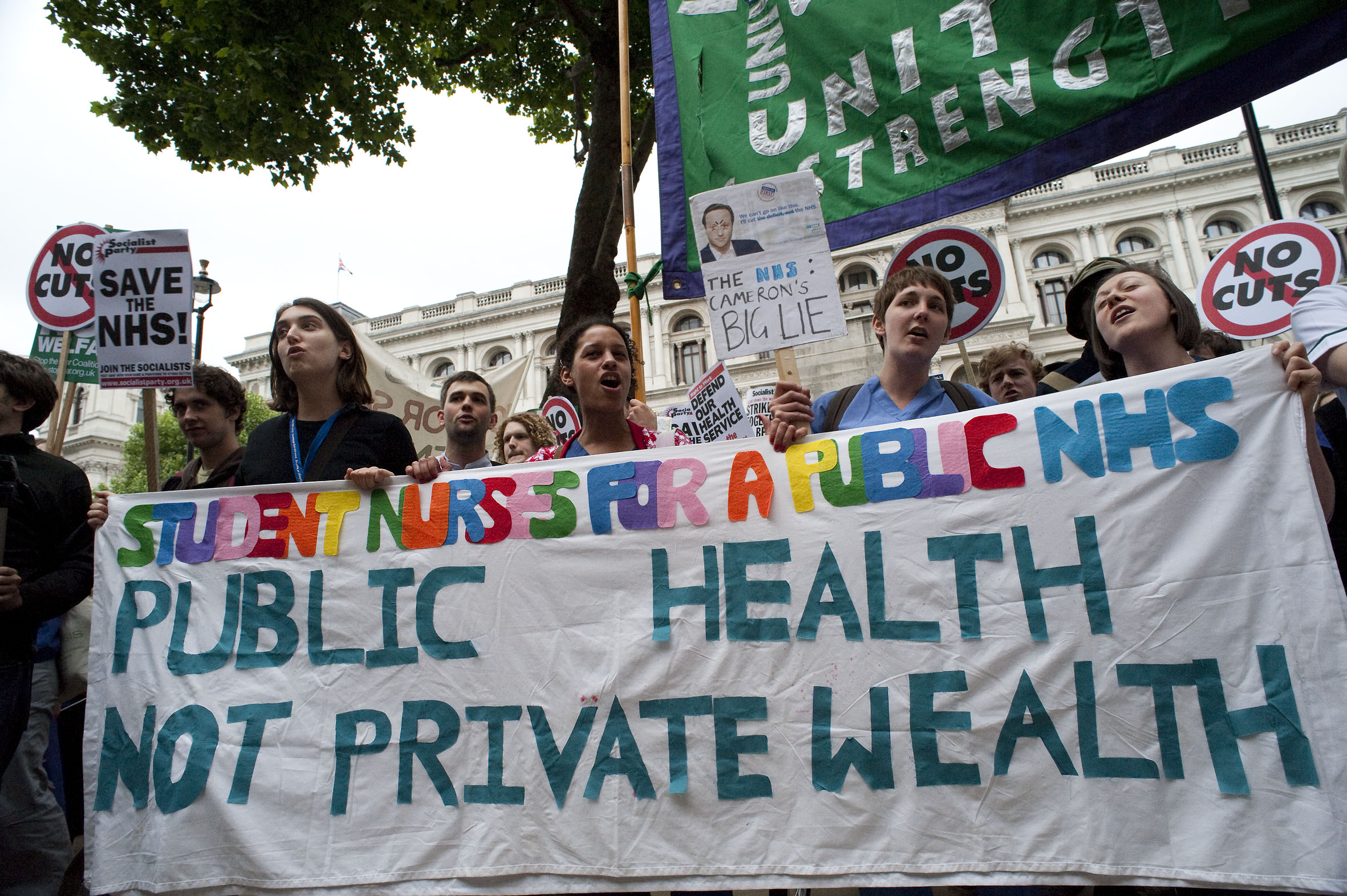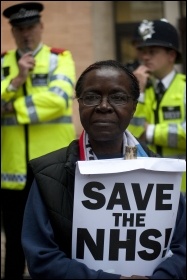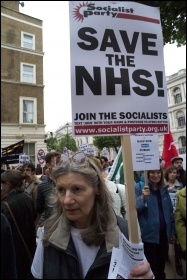David Cameron has made clearer than ever what side he’s on regarding the NHS. “It is because I love the NHS so much that I want to change it,” he said.
This speech spelt out that only very minor compromises, if any, will be made to the privatisation agenda in the Health and Social Care Bill during its ‘pause’ in Parliament.
It has also been revealed that one of his advisers explicitly told a conference in October that the ‘re-organisation’ of the NHS will result in big opportunities for the private sector and that the NHS will become a “state insurance provider, not a state deliverer”, showing the real intentions of the Con-Dems.
However, almost half the population supports strikes over public sector cuts. And a survey of 2,000 nurses and midwives in the trade union Unison showed that almost three-quarters are prepared to take industrial action to protect their pensions.
Anger over the NHS is growing and Cameron & Co will have a fight on their hands. Here, an experienced nurse paints a picture of cuts biting hard and working class people suffering.
I have been a registered mental health nurse since 1999. I have always worked in the NHS, either in a hospital or in the community. I have worked at staff nurse and team manager level (similar to ward sister). I now work as a community mental health nurse due to redeployment after my service was cut to save money.
The current round of cuts is hitting working class people the hardest because they generally have no alternative – no private health insurance or access to private health care. So they have to make do with reduced services.
Obviously the cuts also mean that health workers may lose their jobs or may have to work harder in a more stressful environment because of reduced staff levels.
As for this ‘pause’ that the Con-Dem government talks about, the cuts to the mental health sector are not pausing. My trust plans to make a 4% ‘saving’ each year for three years. The trust continues to review and cut services as planned previously. The NHS is a big machine to start and stop for brief pauses.
This new programme of giving GPs the money to choose what services they require will not help working class people. GPs already regularly restrict their referrals to specialists to save money. Often it’s only when you kick up a stink or when you’re in constant agony and can’t work that they refer.
I’m sure some GPs might like the power, status and extra perks that the new scheme may bring. But they will have to employ extra staff to administer it all, at a cost. Therefore more money will be spent on admin and less on specialist referrals for patients.
It is not unusual for me to get sent information about my trust’s corporate image. Privatisation is already here in the way NHS trusts conduct themselves. Most NHS trust services are more ‘competitive’ at the moment as they have the infrastructure – staff, buildings etc. But it cannot be long before, say a big supermarket chain, puts in a more competitive bid because they will probably hire less expensive, less qualified staff on much worse terms and conditions.
We demand:
- Stop the cuts. For a fully funded, publicly owned NHS, free at the point of use.
- End all privatisation through GP consortiums or other methods.
- Return privatised services to NHS control. Publicly fund and integrate them with the rest of the NHS.
- For united action to defend the NHS involving trade unions, anti-cuts campaigns and service users.











